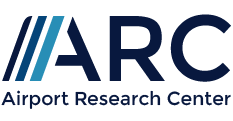When an airport gets close to its capacity, it is essential to know where the exact capacity limit is. ARC has a proven approach to support the airport’s capacity declaration to not lose any capacity.
Project Overview
Dusseldorf Airport (DUS) is a fully coordinated airport (Level 3). Next to the declared hourly capacities, environmental/noise restrictions prohibit flights at night and define limits on the total number of hourly, daily and annual movements. Since 2008 Airport Research Center (ARC) has been supporting Dusseldorf Airport regarding expansion strategies, and evaluation of capacity related operational scenarios. In this context ARC has conducted various capacity studies for declared capacity determination considering terminal, apron and runway system capacity.
Services provided
In order to understand the demand, the flight schedule and traffic structure developments from season to season are monitored by ARC. Based on this knowledge typical peak structures can be selected as reference for the capacity calculations. For the capacity assessments ARC typically uses analytical allocation tools as well as dynamic simulation tools. The analytical allocation is used to evaluate the maximum capacity for flight-related resources (such as stands, gates, check-in, reclaim belts). For each scenario flight schedule the flights are assigned to the available flight-related airport resources considering the corresponding allocation rules and required disposition times. By doing so the actual utilisation / degree of saturation is identified. In case of spare capacity, additional (synthetic) flights are added in an iterative way to the respective schedule to assess the capacity limit.
Then a dynamic simulation is used to analyse the capacity situation when stressed with the corresponding traffic loads. In this scope, undisturbed traffic flows as well as flows with capacity limitations are addressed for several operational scenarios. KPIs include still acceptable delays, waiting times, level of service, buffer times etc. If the acceptable service levels have been reached, this traffic load represents practical capacity of an airport resource.
Results and Benefit
The applied approach with capacity calculations and simulations have been proven to be the tool of choice to identify stable and robust capacity limits for an airport. These limits are a valuable input to be used for capacity declaration purposes. Therefore, ARC is doing these kind of analyses on a regularly basis in order to support the airport in the declaration and slot management process.
The analyses are standardised and well understandable to the client and the involved stakeholders of the declaration committee. Furthermore, with the insights gained in the simulation studies, ARC also gives recommendations for measures to be implemented that lead to an optimised use of available airport resources.








